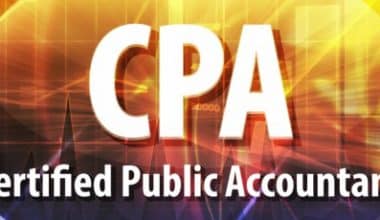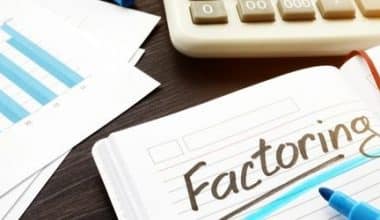You’ve probably heard, seen, or read about the cash conversion cycle, but you’re unsure what it is or how it may benefit your company. This essay will explain the cash conversion cycle, its calculation formula, what a negative CCC signifies, and, most importantly, how to get your organization involved in the cash conversion cycle. Let’s get started on the tour.
What is Cash Conversion Cycle
The cash conversion cycle is the yardstick for measuring the time it takes for resources or raw materials to be transformed into cash. The number derived measures the time it takes to make and handle cash investments in goods and services. To have a good grip on the cash conversion cycle, there are certain elements you ought to consider.
- The recommended time for settling supplier invoices
- The recommended time it takes to process raw materials into polished goods
- The recommended time for the collection of payments from customers.
The cash conversion cycle is not to be considered by every company because not all business ventures require it because of its nature.
Understanding Cash Conversion Cycle
The cash cycle is the number of days it takes for a retail company to pay the supplier for goods and the number of days it takes for a company to receive payment from the customer. The cash conversion cycle measures how long your business will take to collect cash payments from customers/clients.
A company does not perform its production process in cash. Raw materials are purchased on credit, generally known as “accounts payable.” Similarly, sales are made on credit, generally known as “accounts receivable.” Therefore, the cash conversion cycle is defined as the time it takes to receive cash from debtors/receivables and repay suppliers.
How to Boost Cash Conversion Cycle
- Increase in cash payments from customers/clients.
- Accelerate the rate at which raw materials are converted into sales.
- Extending the period, you have to pay suppliers.
- Assess the company’s overall well‐being.
- Store extra stock and reassess your demand projections on a routine basis with previous data to ensure production processes
- Assess your receivables and billing systems regularly to ensure they work for your customers.
Note that it is pertinent to keep a good relationship with both vendors and customers (consider this as you go ahead with the above ways to boost your CCC/cash flow).
What We Mean by Days Sales Outstanding
The cash cycle shows the sale prices, and the time it will take to collect the money. This can also be defined as the number of days it takes to convert accounts receivable to cash, referred to as Days Sales Outstanding.
What We Mean by Days Inventory Outstanding
This is the time it takes to convert raw materials into finished commodities, which are then sold. This is the first part of the cycle, which depicts the current product availability and how long it will take the company to sell these goods.
What We Mean by Days Payable Outstanding
This shows how much money a business owes its current suppliers for inventory and products received and when they must be repaid in full.
For example:
Abc, a company, is in the process of manufacturing limousines. The limousines are maintained in the warehouse for 15 days. Each limo sale takes Abc 10 days to recover receivables, and 8 days to reimburse its suppliers for their credit.
Abc’s CCC = 15 + (-8) + 10
CCC = 17 days
Above, we can see how the cash conversion cycle measures the amount of time needed to produce, sell, and receive payment for the product in the example
Negative Cash Conversion Cycle
In clear terms, the negative cash conversion cycle occurs when a company does not pay its bills for raw materials/resources even after a product has been sold and cash has been received; simply put, it indicates that your suppliers fund your business. Whereas the positive cash conversion cycle, just as the name implies, is that you’ll require operational/capital funding to fund your company, and you’ll have to keep putting money in as it grows.
Let’s use an example to explain further: you have a 50-day cash conversion cycle and are selling $2,000 per day. That means your organization has $100,000 in cash on hand at all times. That value grows to $150,000 if your sales increase to $3000 every day.
For this reason, you have to invest/inject more money to fund the business
To achieve the negative cash conversion cycle:
Firstly, extend the time allotted to pay your bills to vendors/suppliers, i.e., bargain for an additional or longer reimbursement term.
Accept preorders or payments for goods that are yet to be shipped or supplied.
Cash Conversion Cycle Calculation
To understand it, you’ll need to know how many days the Cash Conversion Cycle calculation is measured over.
Calculating quarterly requires the use of 90 days, but calculating yearly demands the use of 356 days.
To effectively calculate the CCC, you have to keep in mind what you are looking for, which is the time frame necessary for your company to turn current inventory into sales or cash. The time it takes to collect accounts receivables and how soon you will have to pay your suppliers.
Furthermore, in the formula for the cash conversion cycle, days are the most common unit for measurement/calculation.
DIO + DSO – DPO = CCC
i.e
Days of Inventory Outstanding + Days Sales Outstanding – Days Payables Outstanding
For instance, Robert creates and sells customized T-shirts, and now, intends to calculate the CCC for his brand in 2023. Robert will take the following steps to achieve this:
#1. Measure the Days Inventory Outstanding
Here, you calculate how long it takes to turn inventory into sales, which is how long Robert retains the inventory before selling it.
Formula: Inventory / COGS X 365 = DIO
According to Robert’s financial report. The beginning inventory for 2023 was $15,000, and the closing account balance was $8,500. The total cost of goods sold throughout the year was $80,000.
Furthermore, you must first obtain the inventory cost to compute the Days Inventory Outstanding:
15,000 + 8,500 / 2 = $11,750 (inventory cost)
Thus;
11,750 / 80,000 = .147
.147 x 365 = 53.65
This indicated that Robert retained his inventory for roughly 53 days before selling it.
#2. Measure the Days Sales Outstanding
This is the number of days it takes you to collect cash from your consumers/clients after a sale. This also is Accounts Receivable.
Formula: Accounts Receivable / Total Credit already being sold x 365 = DSO
Again, In 2023, Robert’s initial accounts receivable balance was $15,000, and his closing receivable balance was $8,000. His balance sheet has both of these values. Using the financial statement, Robert must therefore calculate the overall credit sales for the year, which is $150,000. With these data, Robert should be able to accomplish his goal.
Accounts Recievable = 15,000 + 8,000 / 2 = $11,500
Thus;
11,500 / 150,000 = .077 x 365 = 28.105
This Robert takes 28 days to receive payment for indebtedness.
#3. Measure Days Payable Outstanding
The next phase is how to calculate how long (days) it takes for a company or firm to pay off its debt to its creditors and providers, as the case may be. Remember, this is “days payable outstanding.”
Formula: Accounts Payable / COGS X 365
Robert’s opening accounts payable amount was $8,300, and his final accounts payable balance was $10,200. The yearly cost of product sales was $80,000. This is the same figure for measuring how many days inventory remained unsold.
Accounts Payable Balance = 8,300 + 10,200 / 2 = $9,250
Thus;
$9,250 / 80,000 =.0925
.0925 x 365 = 33.76
This shows that it takes about 34 days for Robert to make payments to her suppliers or distributors.
Finally, to calculate the CCC. We will add the above DIO and DSO together and Subtract the DPO from it.
Altogether from the above example: the formula for cash conversion cycle
DIO + DSO – DPO = CCC.
53.65 + 28.105 – 33.76 = 47.995
Robert converts his inventory into cash in about 47 days. This data aids him in the CCC calculation by determining how well he manages his operating cash flow, or working capital. This is a diagnostic machine for the CCC, as it helps the corporation know its condition in selling stocks and recovering funds while still paying suppliers.
The importance of the CCC is that it helps a company know if its inventory system is in good condition. Hence, it makes people more aware of cash flow and how long goods are held, sold, and paid for.
What Factors Affect the Cash-Conversion Cycle of Small Businesses?
The time it takes for customers to pay their bills, the time it takes the company to produce and deliver the product or service, the time it takes for the product or service to sit in inventory before it is sold, and the time it takes for the company to pay its suppliers all factors that affect the CCC of small businesses.
At What Percentage Would You Consider the Cash Conversion Rate to Be Favorable?
As a measure of effective management of working capital, a cash flow conversion rate of 100% or more is considered “excellent.”
What Is an Appropriate Cash Conversion Cycle?
A good CCC should be concise. Minimizing the cash conversion cycle is one of the cornerstones of running a successful and effective business. If you can get it closer to 1, your company has excellent liquidity, and its operating cash is not tied up for long durations.
Gathering It Up
The cash conversion cycle is when a business enterprise buys products, sells them on credit, collects accruals, and converts them to cash. Moreso, it aids in analyzing how long it takes a company to turn cash into goods, then into sales, and thereafter back into cash. Don’t forget that the formula for cash conversion cycle calculation is the key. Also, remember that sound business management necessitates a negative cash conversion cycle.
Cash Conversion Cycle FAQs
What is a negative cash conversion cycle?
This occurs when a company does not pay its bills for raw materials/resources even after a product has been sold and cash has been received; simply put, it indicates that your suppliers fund your business.
What is Cash Coversion Cycle?
It is the yardstick used for measuring the due time for resources or raw materials to be reformed into cash.
What is the formula for measuring the cash conversion cycle?
Days of Inventory Outstanding + Days Sales Outstanding – Days Payables Outstanding.
How can one Boost Cash Conversion Cycle?
- Increase in cash payments from customers/clients.
- Accelerate the rate at which raw materials are converted into sales.
- Extending the period you have to pay suppliers.






